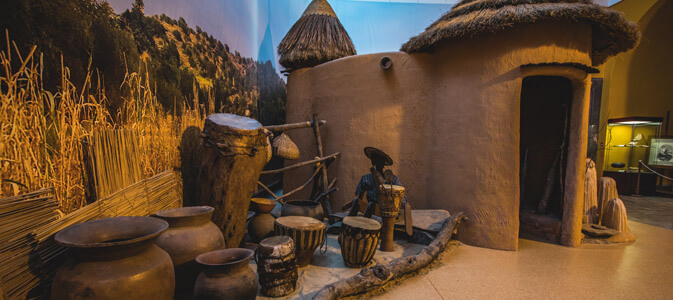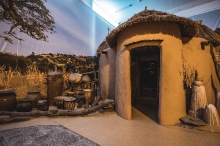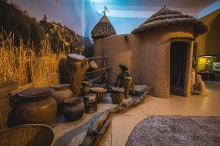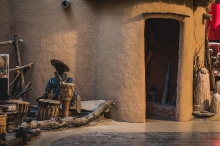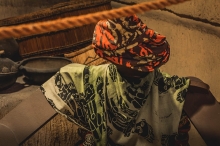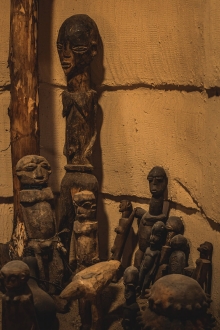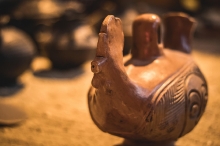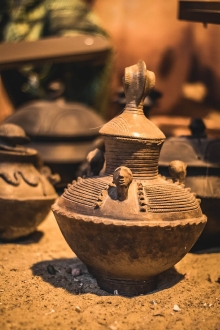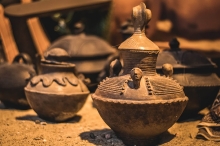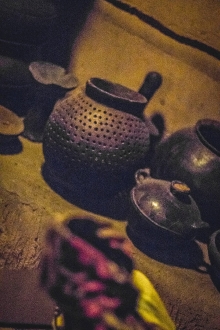The pre-war City Museum in Szczecin had a collection of artifacts of non-European peoples (including African ones), gathered on the initiative of Georg Buschan (presently in the collection of the State Museum of Ethnography in Warsaw). In Polish Szczecin, interest in Africa appeared in the late 1950s with the launch of the West African route by Polska Żegluga Morska – Polish Steamship Company.
Thanks to it, in 1962, in order to establish scientific and museum cooperation, Szczecin museum professionals set out for Africa. Two years later, archaeological excavations in Guinea began. During several research seasons, museum expeditions under the guidance of prof. Władysław Filipowiak found the capital of the medieval kingdom of Mali in the small village of Niani. All archaeological findings from those surveys were returned to the Guinean authorities, while ethnographic monuments, collected during the expeditions and passed by members of the crews of ships sailing to Africa and representatives of PŻM, who worked permanently in African ports, went to Poland.
Most of the objects were, however, acquired during the ethnological expeditions, organized in the 1970-90s by the museum together with employees and students of universities in Poznan, Warsaw and Wroclaw. The expeditions had their own means of transport, which made it easier not only to move around in the field, but also to obtain exhibits and transport them to the country. From the first expedition, which set out for Africa in 1976, a collection of 1309 objects was brought, which doubled the collection which had been collected for 15 years. Research regions usually concerned the so-called refugial cultures, separated from the world around them and its problems. Unique monographic collections were created illustrating the cultures: Dogon (Mali), Daba (Cameroon), Nuba-Moro (Sudan), Somba (Benin), Lobi (Burkina Faso), Gagou (Ivory Coast). Currently, the African collections of The National Museum in Szczecin amount to about 8.5 thousand. ethnographic objects and 25,000 archaeological monuments (from surface surveys conducted in Algeria, Mali, Morocco, Tunisia and Nigeria).
The exhibition presents everyday life in the African savannah, far from the big cities and busy roads that take place between private and public space. The private part is designated by the homesteads of Lobi people from Burkina Faso and Somba people from Benin, completely different in form and construction. The first ones have the shape of a flat cuboid and are divided inside into many rooms, the others resemble medieval castles. This space is clearly arranged for the spheres of women and men, in which sacred places with family altars are separated. The marketplace located between farms represents the public space. It is here that every 5, 7 or 8 days (depending on the local tradition) the village community and merchants coming from distant places gather. It plays an important role not only as a place of trade in local and luxury goods from distant places, but also as a space for information exchange.
